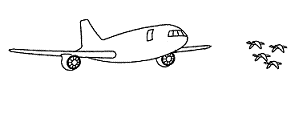Bird Strike Committee Proceedings

Bird Strike Committee-USA/Canada Joint Annual Meeting: 2nd (2000)
Date of this Version
August 2000
Document Type
Article
Abstract
Raptor translocation is currently being used by several airports to reduce collisions with aircraft. Changes in red-tailed hawk (Buteo jamaicensis) numbers and hawk/aircraft strikes were studied in relation to translocation of raptors at Eppley Airfield in Omaha, Nebraska from March 1999 through March 2000. The effect of distance on translocation success was also studied. Hawks were captured with pole traps, banded, and released approximately 80, 160, and 240 km from the airport. Two bird surveys were conducted at bimonthly intervals from April 1998 through March 1999, after which surveys were conducted at weekly intervals. These surveys provided an index of hawk numbers on the airfield. Strike data were used to determine if the number of hawk/aircraft strikes had declined. Forty-one red-tailed hawks were translocated from the airfield. No banded birds were recaptured or observed on the airfield. The number of red- tailed hawks on the airfield declined following peak capture periods (>2 hawks per week). There was a 49% decrease in observed hawks in October 1999 through February 2000 relative to the previous year, with the largest decrease in October (82%). Red-tailed hawk numbers remained unchanged in September and March, prior to peak capture periods. No red-tailed hawk strikes were reported and no carcasses were recovered on the airfield from March 1999 to the present. Translocation of red-tailed hawks 80 km or more was effective in reducing the risk of hawk/aircraft strikes. Management efforts must be persistent, however, as the seasonal migration continues to bring new red-tailed hawks into the area.

